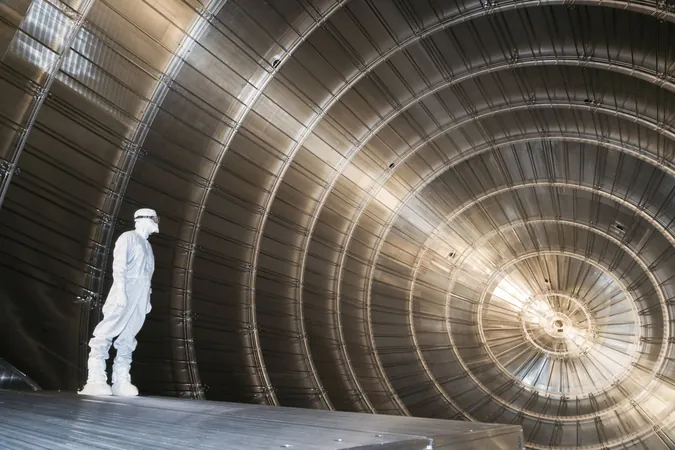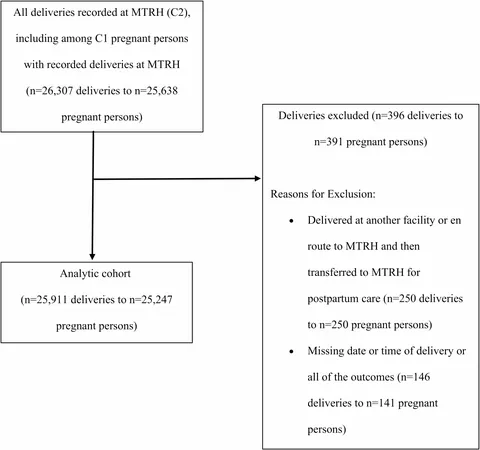
Revolutionary New Findings Reveal Neutrinos Are Lighter Than Ever!
2025-04-14
Author: Jia
Neutrinos, those elusive particles that are everywhere yet barely interact with matter, continue to baffle scientists and ignite curiosity across the globe. Now, groundbreaking results from the KATRIN experiment have pushed our understanding of these cosmic mysteries to new heights!
Neutrinos play a pivotal role in cosmology, influencing the formation of galaxies while their surprisingly tiny mass may hint at unknown physical phenomena. Understanding their mass is crucial for unraveling the fundamental laws governing our universe.
The KATRIN Experiment: A Technical Marvel
Enter the KATRIN experiment, a state-of-the-art initiative involving international collaboration. By examining the beta decay of tritium, a radioactive isotope of hydrogen, KATRIN is able to pin down the mass of neutrinos with astonishing accuracy. The electrons emitted during this decay unveil a treasure trove of information, enabling a direct measurement of neutrino mass.
This ambitious project features a staggering 70-meter-long beamline equipped with a high-intensity tritium source and a 10-meter-diameter spectrometer, representing the pinnacle of cutting-edge technology for precise neutrino mass determination.
A Game-Changing Discovery!
According to the latest data published in the journal Science, KATRIN has established an upper limit for neutrino mass at 0.45 electron volts, which corresponds to an unimaginably tiny 8 x 10⁻³⁷ kilograms! Remarkably, this figure represents a near halving of the previous limits set in 2022.
Collaboration and Challenges
The journey to these groundbreaking findings is rooted in robust data collection and meticulous analysis. Since the measurement phase began in 2019, KATRIN has completed five campaigns, amassing around 250 days of data, which is about 25% of the anticipated total.
"Each measurement campaign offers new insights and refines our experimental conditions," says co-spokesperson Kathrin Valerius. The complexity of the data necessitated exceptional precision from a dedicated international team, employing cutting-edge analysis methods and even artificial intelligence to achieve unprecedented accuracy.
What Lies Ahead?
The race is far from over—the KATRIN team plans to continue their neutrino mass measurements until the end of 2025. With ongoing enhancements to both experimental conditions and data analysis, they anticipate uncovering even more remarkable discoveries.
Notably, KATRIN has already outpaced previous experiments by a factor of four, establishing itself as the leader in direct neutrino mass measurements. The findings suggest neutrinos are at least a million times lighter than electrons, presenting an intriguing puzzle that challenges theoretical particle physics.
Looking to the Future: The TRISTAN Upgrade
As if that weren't enough, KATRIN has plans for an exciting upgrade. In 2026, a new detector system named TRISTAN will be introduced, designed to hunt for a hypothetical 'sterile' neutrino—a particle that interacts even more weakly than known neutrinos.
These advancements not only promise to deepen our understanding of the neutrino but could potentially unlock new chapters in the story of the universe itself!




 Brasil (PT)
Brasil (PT)
 Canada (EN)
Canada (EN)
 Chile (ES)
Chile (ES)
 Česko (CS)
Česko (CS)
 대한민국 (KO)
대한민국 (KO)
 España (ES)
España (ES)
 France (FR)
France (FR)
 Hong Kong (EN)
Hong Kong (EN)
 Italia (IT)
Italia (IT)
 日本 (JA)
日本 (JA)
 Magyarország (HU)
Magyarország (HU)
 Norge (NO)
Norge (NO)
 Polska (PL)
Polska (PL)
 Schweiz (DE)
Schweiz (DE)
 Singapore (EN)
Singapore (EN)
 Sverige (SV)
Sverige (SV)
 Suomi (FI)
Suomi (FI)
 Türkiye (TR)
Türkiye (TR)
 الإمارات العربية المتحدة (AR)
الإمارات العربية المتحدة (AR)